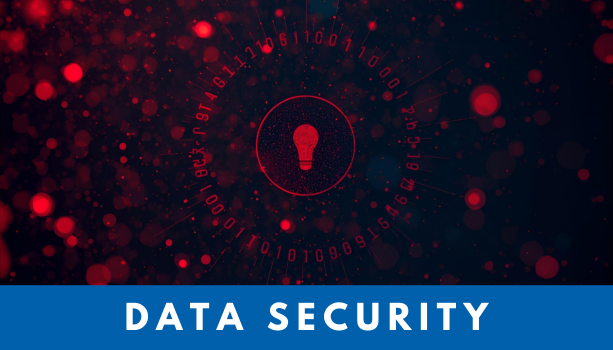Data Breach Trends You Need to Know Now
As digital transformation accelerates globally, data breach have become a front-line threat not only to nations and industries but also to individuals. The severity of these breaches has reached unprecedented levels. In the first half of 2025 alone, there were 1,034 reported incidents—an increase of nearly 15% compared to the same period last year. This surge is not just a statistical anomaly; it signals a pressing need to rethink cybersecurity frameworks and awareness. Today, data breaches represent far more than information leaks. They pose complex risks that include financial damage, brand reputation loss, and legal penalties from regulatory bodies.
2025: A Year of Unprecedented Mega Data Breach
The year 2025 has seen a wave of catastrophic data breaches affecting governments, enterprises, and individuals alike. One of the most alarming cases involved the exposure of over 16 billion login credentials from major global platforms like Google, Apple, and Facebook, which were circulated on the dark web. This massive dataset was not the result of a single breach. Instead, it was accumulated over years of various attacks and malware infections, exposing more than one account per internet user worldwide. The incident starkly revealed how vulnerable login credentials and passwords are in today’s digital environment.

Key Causes and Methods Behind A Data Breach
The evolution of cybersecurity threats in 2025 has kept pace with rapid technological advancements. Recent breaches have shown that attackers are meticulously probing corporate digital infrastructures for exploitable weaknesses. Common causes include cloud misconfigurations, stolen account credentials, prolonged internal network infiltration, and the increasing monetization of stolen data.
Cloud Misconfigurations: A Growing Attack Vector
With cloud-based services becoming standard, breaches stemming from misconfigured cloud environments and weak access controls are rising sharply. If a public cloud is incorrectly configured by an internal administrator, external actors can easily access sensitive data. This issue is even more critical in AI-powered cloud environments, where exposed API keys or training datasets are increasingly common. According to IBM, such configuration errors now account for roughly 40% of corporate data breach. These cases highlight how cybersecurity measures are struggling to keep up with the rapid adoption of AI.
Credential Theft and Resale on the Rise
Credential stuffing attacks have exploded in 2025. Attackers compile previously leaked emails and passwords and use automation tools to attempt logins across thousands of websites. When successful, they resell these accounts on the dark web for secondary exploitation. These attacks are now being enhanced with deepfake technology and social engineering tactics, enabling hackers to impersonate real employees and gain system access. As a result, companies must prioritize both technical defenses and employee cybersecurity awareness training.
Long-Term Network Intrusions
One of the most notable breaches of 2025 was the Finwise incident, where attackers infiltrated the internal network for months, continuously exfiltrating customer data without detection. This was due to weak access control and inadequate monitoring systems. Legacy server structures and delayed patching gave hackers prolonged access, highlighting the need for robust internal network defenses.
The Expanding Market for Stolen Data
A data breach is no longer isolated events. Instead, they feed a growing black market where stolen credit information, medical records, and location data are actively traded on the dark web. Some hacker groups even refine and repackage this data through “data laundering” to increase resale value. As a result, a single breach can lead to long-term exploitation and prolonged financial and reputational damage.
Effective Security Strategies Against A Data Breach
In response to escalating threats, enterprises and public institutions are evolving their cybersecurity strategies. The most essential pillars today are Zero Trust architecture, stronger authentication frameworks, and robust data encryption. These are no longer optional security measures; they are integral to any modern cybersecurity culture.
The Rise of Zero Trust Security
Zero Trust is a security model built on the principle of “never trust, always verify.” Unlike traditional models that implicitly trust users or devices within the internal network, Zero Trust continuously verifies every access request and restricts access to the minimum required level. This approach is especially effective in blocking account takeovers and long-term intrusions by internal threat actors.
Strengthening Authentication to Prevent Account Theft
A large portion of data breaches begins with weak authentication. To counter this, many organizations are moving beyond traditional password-based logins and adopting multi-factor authentication (MFA) and passwordless technologies. These methods create secure and transparent identity verification environments. In a Zero Trust framework, passwordless and MFA solutions are crucial to maintaining reliable access controls.
Encryption: The Last Line of Defense
Even the strongest firewalls and detection systems cannot provide complete protection unless the data itself is encrypted. In several 2025 incidents, sensitive data was stored in plaintext, making it immediately usable by attackers. Encryption does not prevent intrusions but ensures that compromised data remains inaccessible. Thus, data encryption stands as the most definitive and final line of defense in corporate information protection strategies.
A Turning Point in Cybersecurity Awareness
The sheer volume and complexity of 2025 data breaches have made one thing clear: we must dramatically shift our perception of data security. As hacking techniques grow more sophisticated, defending against threats without continuous investment and proactive infrastructure management is becoming increasingly difficult. Organizations must adhere to foundational security principles while integrating the latest technologies for prevention, detection, and response. Likewise, individuals should make secure practices—such as using strong passwords, enabling two-factor authentication, and avoiding suspicious emails or links—a part of their daily routines.
Penta Security, a top global cybersecurity company, continues to emphasize the need for adaptive and comprehensive solutions to combat these evolving threats. With a focus on innovation and global cybersecurity leadership, Penta Security is helping organizations worldwide stay ahead of data breach risks.
Click here to subscribe our Newsletter
Click here for inquiries regarding the partner system of Penta Security
Check out Penta Security’s product lines:
Web Application Firewall: WAPPLES
Database Encryption: D.AMO
Check out the product lines of Cloudbric by Penta Security:
Cloud-based Fully Managed WAAP: Cloudbric WAF+
Agent based Zero Trust Network Access Solution: Cloudbric PAS
Agentless Zero Trust Network Access Solution: Cloudbric RAS
Click here for inquiries regarding the partner system of Cloudbric
